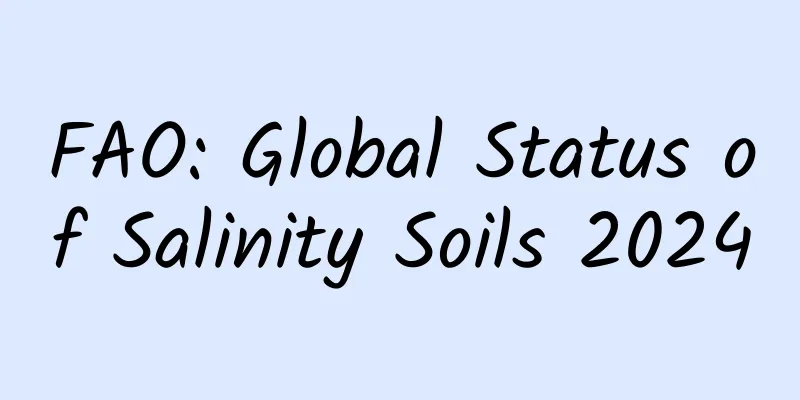FAO: Global Status of Salinity Soils 2024

|
The Food and Agriculture Organization of the United Nations has published a report on the global status of saline soils. Salt-affected soils are specific soils with elevated levels of soluble salts (saline soils) or exchangeable sodium (sodic soils), which adversely affect the growth of most plants. The technical criterion used to distinguish saline soils from other soils is the relatively high electrical conductivity of the saturated paste extract, or the relatively high soluble salt content. The salinity thresholds exceeded for harmful effects on plants vary depending on the type of plant, the type of salt, and the health and fertility of the soil. Drivers of salinization and solidification are both natural and anthropogenic. Primary (natural) causes of soil salinization and solidification include climate change and its related phenomena; exacerbated by sea-level rise; and tsunamis. Secondary soil salinization and solidification can be caused by irrigation with poor water quality, inappropriate drainage or irrigation practices, deforestation and removal of deep-rooted vegetation, over-extraction in coastal and inland areas, overuse of fertilizers, use of de-icing agents, and mining activities. Saline soils are found on all continents, but their severity varies. Natural saline and salt marshes are often found in arid, semi-arid and coastal regions, where they can host valuable, adapted ecosystems, housing species that can only survive in such soils. The report provides a new estimate of the global area of salinized soils, which totals 1.381 billion hectares, or 10.7% of the world's total land area. Estimates dating back to the 1980s and early 1990s suggest that 450,000 hectares (19.5%) of the world's irrigated land and 320,000 hectares (2.1%) of rain-fed cropland, totaling 770,000 hectares, are affected by salinity. Ten percent of irrigated cropland and 10 percent of rain-fed cropland are affected by salinity or alkalinity, although uncertainty remains high due to the lack of available data. Models of global drought trends in the 21st century predict that it could increase to 24% to 32% of the total land surface under current temperature increases. Up to 80% of droughts will occur in developing countries.
|
<<: Serious BUG found in the latest version of Windows 10: Wi-Fi is unavailable
>>: iPhone 7 Plus dual camera leak: no optical image stabilization
Recommend
Google releases a big move! The last update of Android 12 preview version may be released in August 2021
[[394963]] Image credit: juniorbeep/Getty Images ...
108 Internet Marketing Tools/Websites
Ever since the Wei Zexi incident broke out last y...
Giving Up Syndrome and Beyond: The Weird Case of Mind-Body Problems
Leviathan Press: I was chatting with my mother a ...
Brand marketing core competitive strategy!
As consumer demand and preferences change, in the...
Mafengwo Product Analysis
Many people yearn for poetry and distant places, ...
[Hu Yong SEO] Some SEOs have been working for more than ten years but are still rookies. Why is this so?
Some SEOs have been working for more than ten yea...
Ma Sichun lost 20 pounds in a week. What are Ma Sichun’s weight loss methods?
Yes. By adjusting her diet, Ma Sichun lost weight...
Look, this is a "strip horse", you can sweep it!
This is a 1D code (barcode). This is a QR code. T...
Build a simple hybrid cross-platform mobile app with Ionic
introduce Since hybrid mobile development became ...
How to design the "Enterprise WeChat + Mini Program + Live Broadcast" fission matrix
Today I will share with you how to design the &qu...
Product Operation: Competitive Product Analysis Methodology
A classmate among my followers found me and asked...
Samsung products have been in trouble in China because of its arrogance and disregard for Chinese users.
As one of the world's top technology companie...
618 Xiaohongshu traffic strategy, read it quickly!
Recently, many friends in the group have asked ab...
Samsung Electronics Financial Report: Samsung Semiconductor Division's Operating Revenue Drops to 66.59 Trillion Won in 2023, a Year-on-Year Decrease of 32%
Samsung Electronics recently released its 2023 fi...
Bird Lover Week is here! Why do these beautiful birds love this place?
Birds are an important part of the ecosystem. Eff...







![[Smart Farmers] This unique "small ingot" in China is a favorite "dessert station" for migratory birds](/upload/images/67f20ecc0ee7b.webp)

